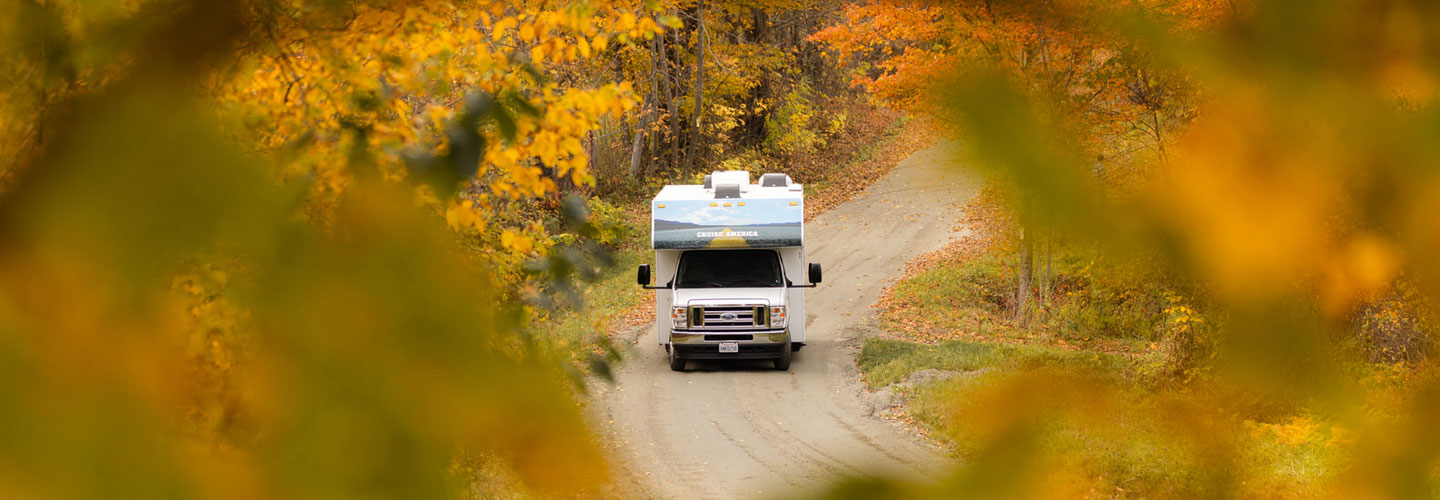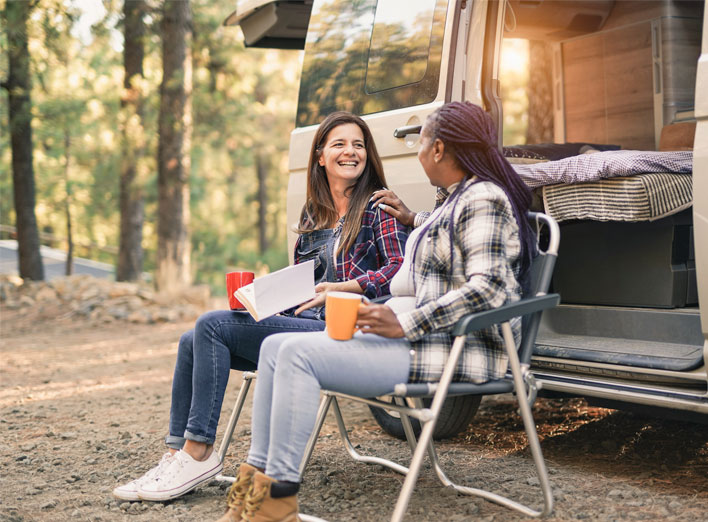Boondocking Guide – Reconnecting with nature
Dive into nature, be a boondocker!
Disconnecting from everything and everyone for a couple of days or a week is one of those experiences that needs to be done if you are a camping enthusiast and you love spending time in the great outdoors. However, there are a couple of things to be mindful of before diving into this new experience and reconnecting with nature. You should read the following article, if you’re planning to spend some time in the country or at the beach with your RV or trailer. In the following article, you will find detailed information on boondocking, dry camping and current rules.
If you are unsure about what to take with you this article has a helpful list of all the necessary tools and gadgets you’ll need to be at one with nature.
Are you still feeling unsure whether this type of adventure is for you? Read the article below and get inspired about trying something new!

What is boondocking?
The word boondocking derives from the Tagalog word “bundók” meaning mountain. This term was commonly used in the US after the Philippine-American War, however, nowadays it refers to camping “out in the boonies”. When it comes to RV drivers, boondocking means driving a camper or a trailer to a remote place and only using your own supplies and skills.
Boondocking VS wild camping and dry camping
Even though boondocking is often used as a synonym for wild camping and dry camping, they aren’t the same. Boondocking refers to RV campers who don’t use any electricity, water or bathroom facilities anywhere outside of the camping ground, whereas wild camping means to go camping with a tent. However, you can do both camping styles at a camping ground. By contrast, dry camping includes camping in developed areas such as at established camping grounds or parking lots.
Benefits of boondocking
Having explained a little bit about what boondocking is, we would like to show you why this is an amazing experience that you shouldn't miss out on. Being at one with nature is not the only exciting part of this experience as you can see below:
Cost: you don’t need to reserve or pay for a camping ground and the extra services. However, to camp in some areas you can be requested to pay a fee or asked for a permit.
Privacy: you can decide on how much privacy you would like. Many boondockers choose areas where they can be on their own for a couple of days or weeks. However, if it is your first boondock experience and you would prefer to share the experience with a friend or go with a travel companion, you can look on dedicated forums for boondockers.
Know yourself and your limits: boondocking gives you the opportunity to spend time by yourself to improve your crafting skills. Embrace the challenge of living without the comforts of modern everyday life such as learning,if permitted, how to light a fire.
Great opportunities: do you enjoy long walks? Hiking or biking trails? Camping in remote areas allows you to explore and experience the great outdoors without ever feeling bored.
Flexibility: you can choose where you want to stay and also how long you would like to stay for. However, always make sure that it is somewhere safe and a designated area specifically for boondocking. You won’t need to check in and check out by a specific time and you also won’t be dependent on the services available at the camping ground.
Boondocking: how to legally choose a spot
Beautiful landscapes, amazing sunsets, blue lakes and rivers: these are just some of the views that you may see whilst boondocking. However, please be aware that some laws and regulations exist on where you may park your RV. Each state may have different rules and in some states you may also have to apply for a permit.
Boondocking in the USA
In the USA, you are allowed to boondock on public lands and in national parks, as long as they don’t belong to inholders (private owners).
In general, you will need to follow the rules below:
You can stay in a specific place for a maximum of 14 days, in some areas it is allowed to boondock for 15-16 days. For more information, contact the local Bureau of Land Management.
You must drive on established roads.
You cannot park along the roads as it might impede the normal traffic of other vehicles.
You must park in an area designed for dispersed camping, if available.
Campfires are generally not allowed. However, camping stoves, lanterns and other pieces of camping equipment are allowed.
You are not allowed to cut down trees and gather plants.
Boondocking in Canada
Similar rules apply in Canada, however, generally you can boondock in any public land, referred to as a Crown land. The areas around urban centers are mostly private. Therefore, always make sure to ask the landowner for their permission before parking. Here are some rules that apply to Canada:
Canadian citizens can boondock on Crown lands for a maximum of 21 days. Non-Canadian citizens must purchase a permit. Keep in mind that there might be different rules and fees depending on where you would like to boondock.
You cannot park in national parks or in provincial parks. In some provinces you can park in so-called“Recreation Sites”, which are often free of charge and are off the beaten path.
Some areas in Canada are very dangerous due to bears. Before parking make sure to check out the area so that you are safe.
There are some very useful websites and apps for easily locating a boondocking camp such as ioverlander.com or freecampsites.net.

Boondocking must haves: tools and gadgets for safe
boondocking
Boondocking is all about wilderness, time spent alone and adventure. This doesn’t mean that this experience is based on survival. There are indeed lots of tools and gadgets you might want to consider buying before going on your first experience.
Here is a list of things that you should have to make your boondocking trip an unforgettable experience.
Power:
RV batteries: make sure they are fully charged and bring an extra one.
RV generator: it allows you to charge your RV batteries, lights and RV appliances.
Extra fuel
Solar panels: whether it is a rooftop solar panel or just a small solar panel. They will come in handy to help you save energy.
Water & waste:
Portable water bladder: you will be able to refill your camper with clean water.
Water filter: in addition to reducing the consumption of plastic bottles, you will always have fresh clean water to drink.
Composting toilet: a black water tank might fill up quite quickly and you won’t be able to empty it out where you will be staying. A composting toilet doesn’t use water and it is environmentally friendly.
How to keep your camper cool and warm:
Keeping warm: a portable propane heater, camper insulation and warm bedding are ideal for keeping your camper warm without using any electricity.
Keeping cool: a portable fan and window shades are ideal for keeping your camper cool.
Emergency:
Cell phone signal booster: in case of an emergency, you can call for help without having to find somewhere with a signal.
Flashlights and outdoor solar lanterns
Emergency kit and first aid kit with prescription medication, bandage, bandage tape, burn ointment, thermometer, scissors, tweezers, alcohol, iodine etc.
Multi-tool and basic tools to fix your camper such as lug wrenches, tire inflator, shovel, pocketknife, hammer and screwdrivers.
Bug spray and, if necessary, bear spray.
Make your boondocking trip sustainable
Whilst boondocking it is important to be aware of your surroundings, which means you should leave everything as you found it. Below you will find the 7 Leave No Trace (LNT) principles:
Plan ahead & prepare: each dispersed camping has different rules and regulations. Make sure to follow the rules and regulations and check that you have enough supplies for the duration of your vacation. Know your limits and don’t put your life at risk.
Travel & camp on durable surfaces: park your RV at a designated boondock site.
Dispose of waste properly: don’t leave your garbage outside; it might attract wild animals in search of food. Do not empty your black water tank on public lands.
Leave what you find: don’t cut down trees or dig anything up. In case you find any artifacts make sure to leave them there. This rule also applies to wildflowers, plants and rocks.
Minimize campfire impacts: if campfires are allowed, use the firepit that is already there. Before leaving, make sure to put any campfires out.
Respect wildlife: don’t get too close to wild animals and don’t feed them. If you’re traveling with any pets make sure to keep them under control and on a leash.
Be considerate of others: be aware of your surroundings, don’t create too much noise especially late at night and keep your boondock site clean and tidy.

Challenge yourself and see how environmentally friendly you can be whilst boondocking. For more information on how to find an environmentally friendly motorhome, drive in a fuel-efficient way or how to save fuel check out our article on “Sustainable motorhome travel”.
What to check before going boondocking
Boondocking in public lands is a great way to be at one with nature. Whether it is in a forest, close to a river or a lake, you will need to follow some rules and regulations before boondocking. Packing wisely will help you to get the most out of this exciting experience. Plan in advance, find the perfect spot and make sure your trip has no impact on nature.
